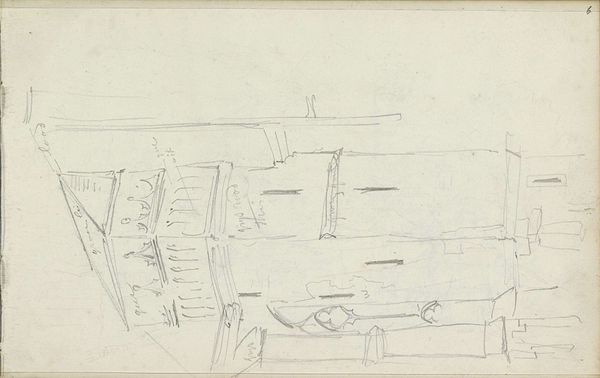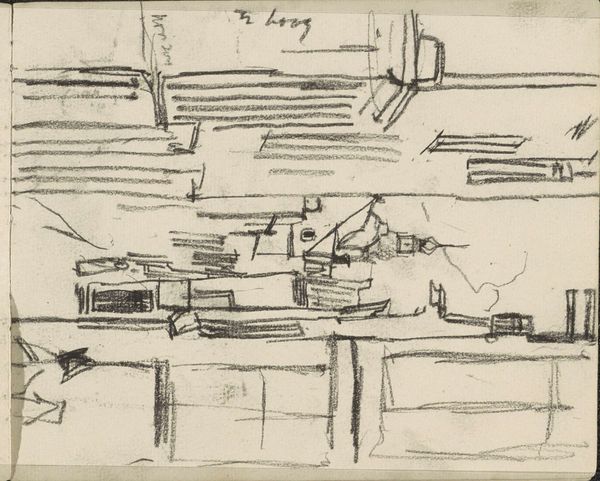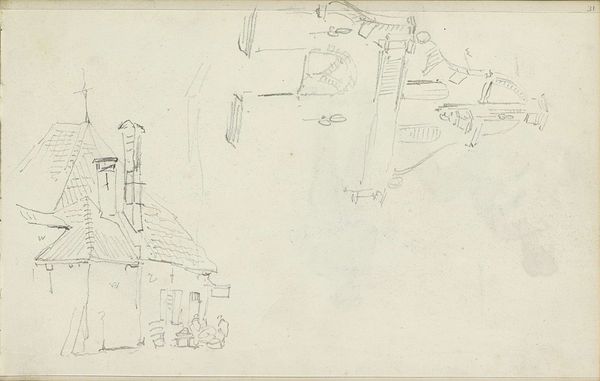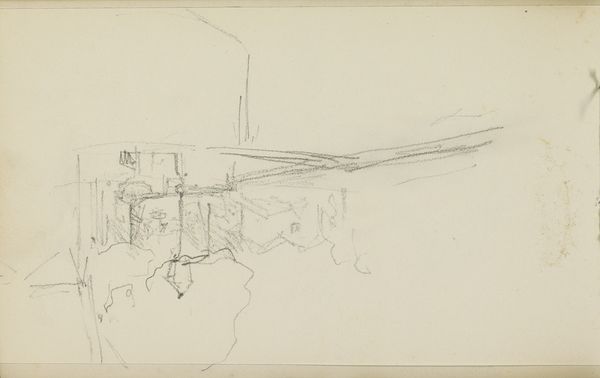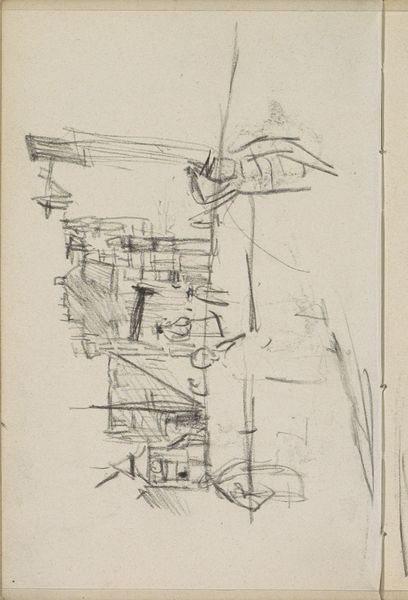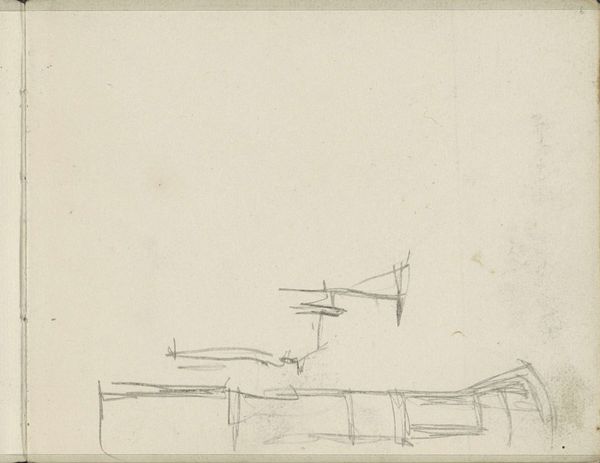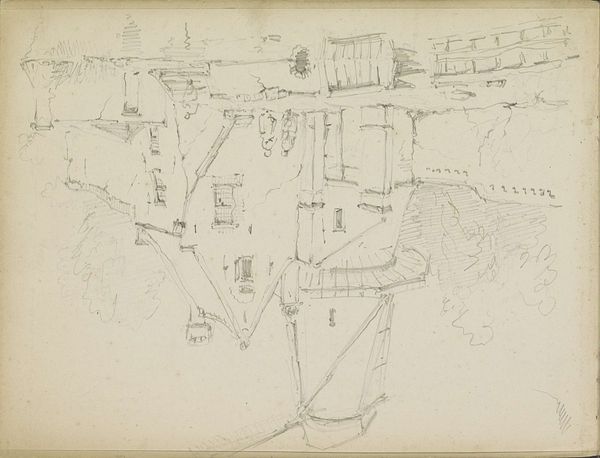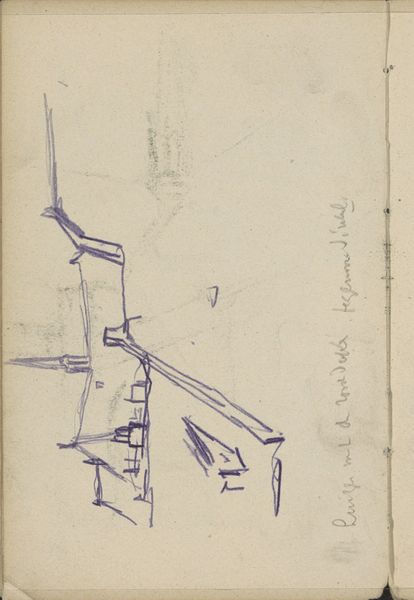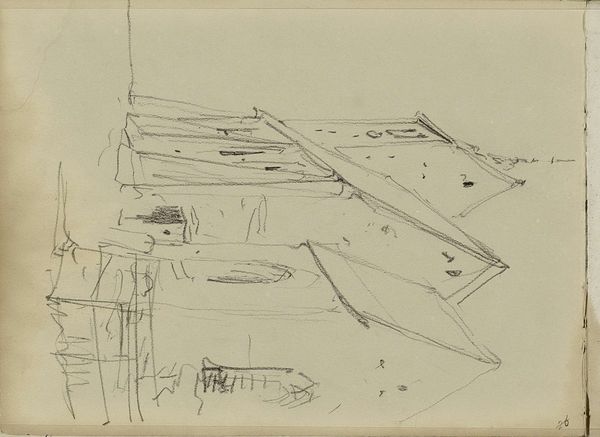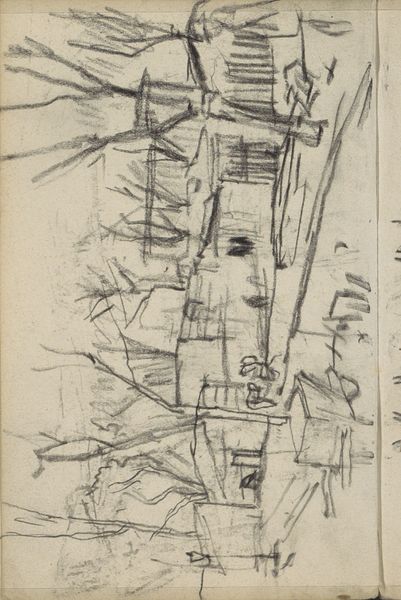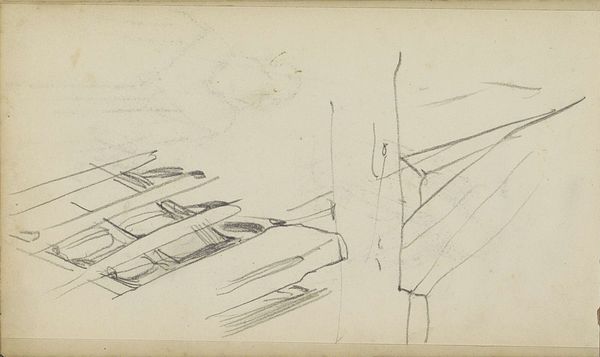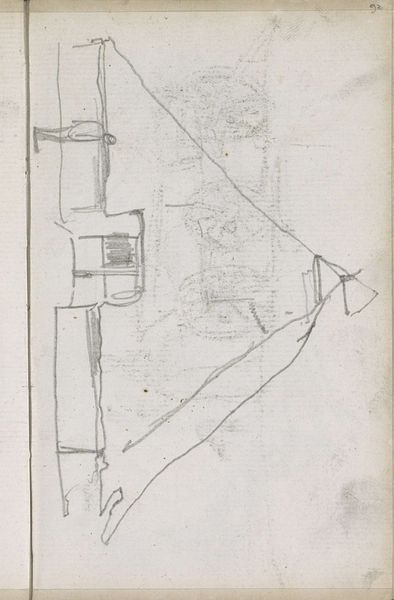
Copyright: Rijks Museum: Open Domain
Curator: What a seemingly simple, but evocative sketch. It reminds me of quick notations one might make while walking through a city, almost unconsciously absorbing details. Editor: It’s undeniably raw. You can almost smell the pencil dust and feel the texture of the aged paper. But beyond the tactile sense, what’s immediately striking is the lack of finish; it feels less like a 'work' and more like raw material. Curator: Exactly! This is “Figuren in een steeg”, or "Figures in an Alley", a drawing by George Hendrik Breitner, created sometime between 1886 and 1923. He’s not just capturing a physical place but, I think, a moment of observation, the initial impression of a scene. Editor: Considering its origins in Breitner’s sketchbook, it resonates as an impression, indeed. It emphasizes the social circumstances that enabled such casual recording. Was he sketching this in plain view? Or did he seclude himself somewhere, only to emerge with these impressions, almost archaeological records now of the fleeting moments from the backstreets? Curator: Well, consider Breitner’s relationship to Amsterdam. He was known for capturing its working-class districts, the everyday bustle. These weren’t idealized portraits, but raw observations of modern life. That, itself, is laden with symbolic weight, right? The democratizing of art by looking to everyday life, and representing it authentically. Editor: And let’s remember the materials. Pencil, readily available, easily portable, facilitated this kind of rapid documentation. How reliant he became on urban advancements. Also the mass-production of drawing paper and pencils enabled this immediate form of visual processing that had, historically, been available only to the wealthy elite. Curator: And through these jagged lines, aren't we deciphering stories and seeing fragments of the city? Almost feeling, in its sketchiness, a memory? It’s the essence of Impressionism— capturing fleeting light and movement, but also the sensory atmosphere of the city. Editor: It leaves you to wonder what the cultural significance was for paper usage in such drawings. Was this sketch disposable? Or intended as groundwork for other paintings to come later? It makes one wonder if we are to marvel at this, or is it actually an ephemeral discard that we've arbitrarily decided to celebrate. Curator: I think both are equally valuable ways to approach this, and the visual records it stands to represent about turn-of-the-century Amsterdam. Editor: Agreed. The simplicity itself, is a revelation, it prompts questions about our own processes, our relationship with recording, our engagement with daily city experiences.
Comments
No comments
Be the first to comment and join the conversation on the ultimate creative platform.
